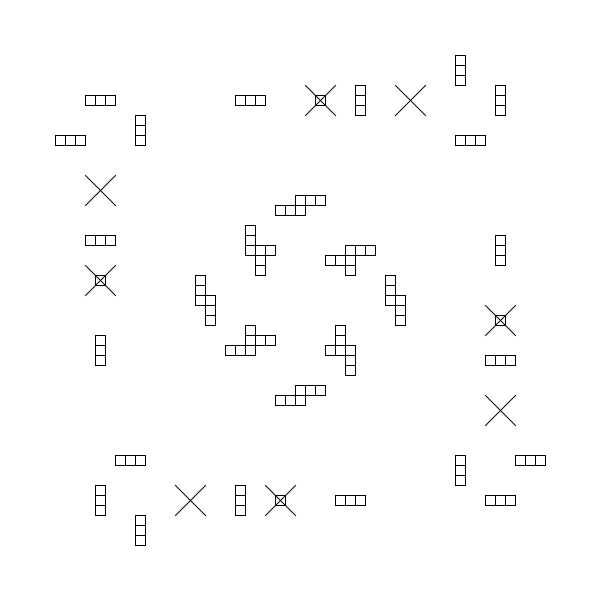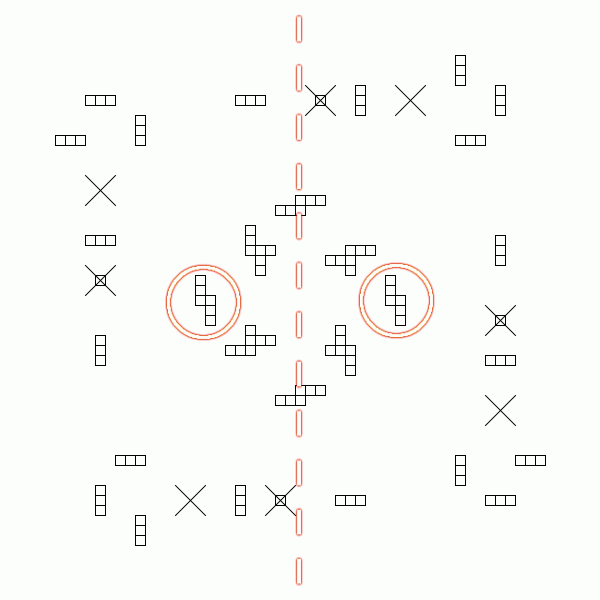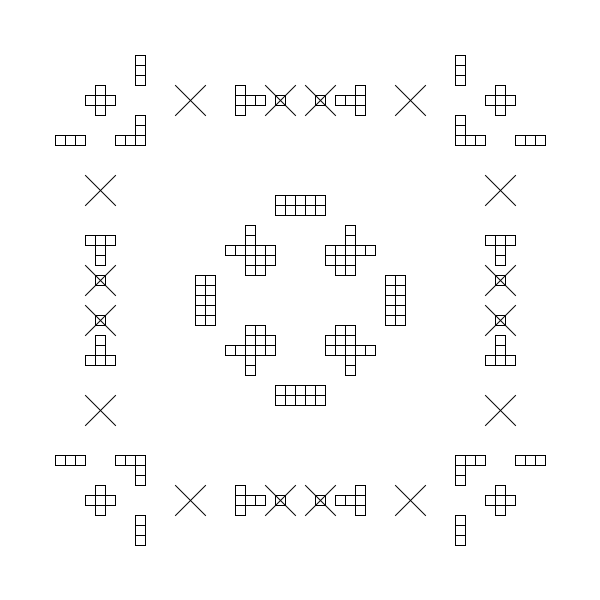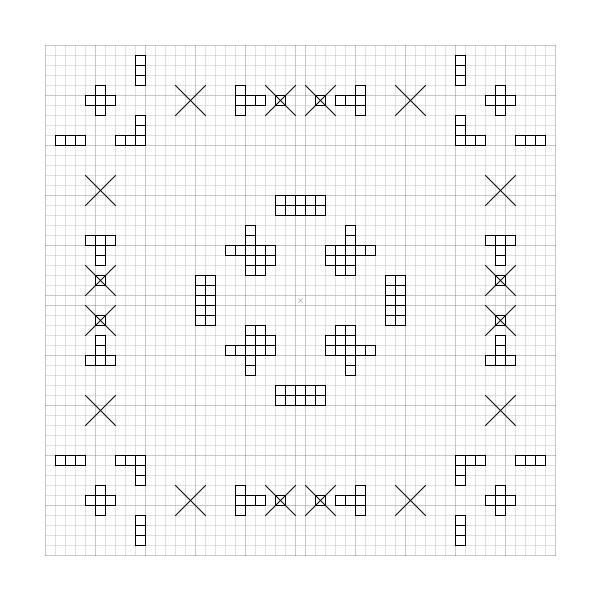Let's take a look at the pattern resulted after the three rotations, and try to make it more complete in some way:
The two items highlighted below (among others) may inspire us to duplicate the whole pattern again, and then rotate it around the Y axis, or (which, of course, means the same) reflect it in the Y axis:
Note: obviously we would get the very same result if we reflected the pattern to the X axis.
The resulting state after the reflection:
The pattern with the grid switched on:
And with a lower opacity to reveal the overlaps of the elements:
The picture with full opacity again:
As we can see, the pattern is much more complete than before, and seems to be finished now. It is also surprisingly well arranged and orderly! In the next step we will analyze it thoroughly, and try to find out, how likely it is to get such an organized figure after the operations we have performed: whether it is mere symmetry, or rather a very special initial layout was necessary in order to come to such a result.





